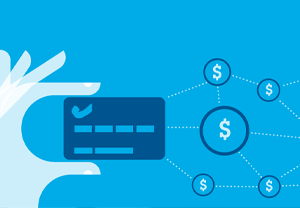Think you have what it takes to catch a scam? Con-Million the Chameleon is back with another installment of the Rascal Report. The scams and amounts lost in the stories below are real, but the names used are not.
 The Investment Connoisseur
The Investment Connoisseur
Matthew was approached by an investment connoisseur named Martha on LinkedIn. Martha was employed by a reputable company, financially savvy, and willing to show Matthew how to get a great return on his investments. They moved their conversation from LinkedIn to WhatsApp and began getting to know each other. Eventually, Matthew began listening to Martha’s financial advice.
Martha was adamant that the quickest return on investment would be to invest in crypto, but Matthew wasn’t sold on the idea. Matthew tried crypto investing a few years ago and lost about $700, so he wasn’t too keen on trying it again. No matter how much Matt vetoed the idea, Martha always routed the conversation back to crypto investments. She promised Matthew that she could recover his previous loss of $700 and more. She told him that her aunt had a finance degree and that they both could help him get a 20% profit if he were to invest with them. That seemed to grab Matthew’s attention; a 20% return was not something he wanted to pass up.
Once Matthew agreed to work with Martha and her aunt, she instructed him to download an app called AMGEX. They started the investment with about $300 from Matthew’s Coinbase account and a small contribution from Martha, to build trust between the two. From there, things quickly ramped up. Matthew began taking withdrawals from his retirement accounts and then wiring those funds to his personal Coinbase account, which were transferred to the AMGEX account. Then, Martha would step in and transfer the funds to various platforms. Matthew wasn’t sure exactly where the money ended up, but he trusted Martha as they had established a friendship.
The Problem? Martha was a scammer. With Martha in complete control of his funds, Matthew was left with a significant loss. Matthew had sent Martha over $610,000, but was only able to recover $177,600.
Takeaway: If things seem too good to be true, chances are a loophole or scam is involved. In the fraud world, what Matthew experienced is referred to as Pig Butchering. The analogy comes from gaining trust in the victim – fattening up the pig – then stealing the victims crypto or money – the butchering. Scammers troll social media sites looking for their victims. Contact is made and a relationship, romantic or otherwise, is established. After their trust is gained, the scammer encourages the victim to start investing in crypto for a large return on investment. The scammer instructs the victim on every next step: apps to download, websites to visit, etc. Scammers make it appear that the victim is getting a return to convince them to invest even more money. However, if the victim ever tries to access the funds, they cannot, often being told a fee or taxes are due. By the time the victim realizes the investment platform is fake, their funds are long gone.
 The Anti-Virus Subscription Refund
The Anti-Virus Subscription Refund
Sally received an email from an anti-virus software company stating that she had been charged for an annual subscription. Sally did not utilize this service on her devices, so she called the number provided on the email. The customer service representative was happy to assist her, but needed Sally to download AnyDesk to share her screen and log into her online banking so they could verify she was charged a fee from them.
The customer service representative told Sally they were going to credit her $1,000 to refund the charge, but accidentally added some zeros and gave her $100,000 instead. They requested that Sally immediately go to a branch and wire the funds back to them. Sally could see the transaction on her account history, so she proceeded with their request.
The Problem? The email was a scam and the number listed on the email belonged to a scammer. Sally was never charged $1,000, but unknowingly gave the scammers access to her accounts when she installed the remote desktop application they instructed her to and signed in to her online banking. The $100,000 transaction that Sally saw on her account was a transfer the scammer made from Sally’s savings into her checking account when Sally granted them remote access to her computer. Had she been successful in sending the wire, she would have lost $100,000!
Takeaway: If you get a suspicious email you were not expecting, exercise caution before clicking any links or calling any numbers listed. Fraudsters often imitate emails from a legitimate company. However, these emails often contain poor grammar and punctuation. The email sender’s domain is often different from the real company’s website – for example, [email protected] instead of [email protected].
Con-Million the Chameleon Says: Fraudsters are clever and can operate in different ways. Many scams involve slowly gaining the victim’s trust through companionship or “investment opportunities” before asking for money or access to their accounts. Other scams rely on creating a false sense of urgency by sending fake order confirmations to trick victims into providing their personal information.
- If an investment opportunity seems too good to be true, it probably is. Research the advisor or company that is trying to sell you investments before you transfer funds.
- Using a legitimate service to transfer funds does not mean that the person or company you are sending it to is who they say they are. Scammers often use legitimate exchanges and transfer services to receive funds, but unless you directly control the account that the funds are sent to, your money may not be recoverable.
- Credit union employees will NEVER call you to ask for sensitive information such as your password, verification code, full debit/credit card number, or PIN.
- You should NEVER install screen-mirroring or remote desktop software on your device at the request of anyone claiming to be from your financial institution or a merchant that asks to verify your transactions to send a refund.
- You will NEVER be asked to send “test payments” or transfer funds to troubleshoot or “unlock” Cash App, PayPal, Venmo, or Zelle® accounts or payments.
- If you experience issues with unauthorized or missing transactions, contact the credit union directly.



